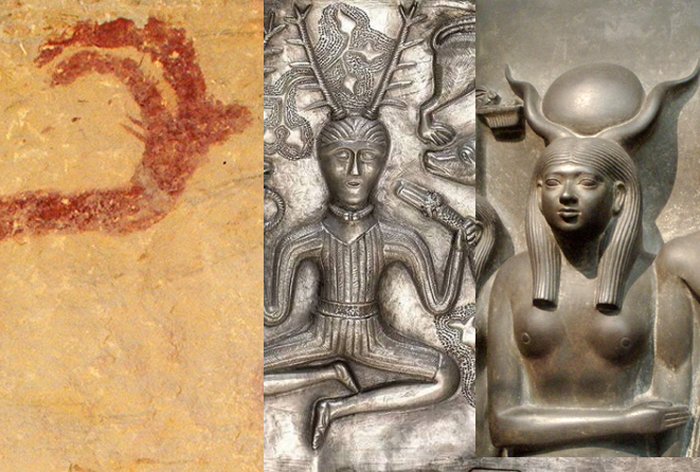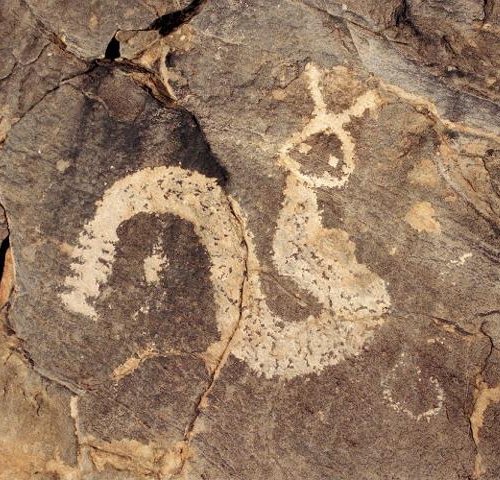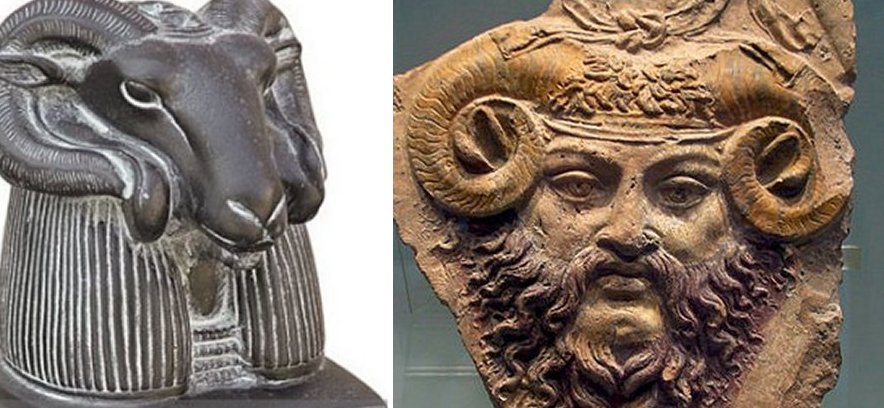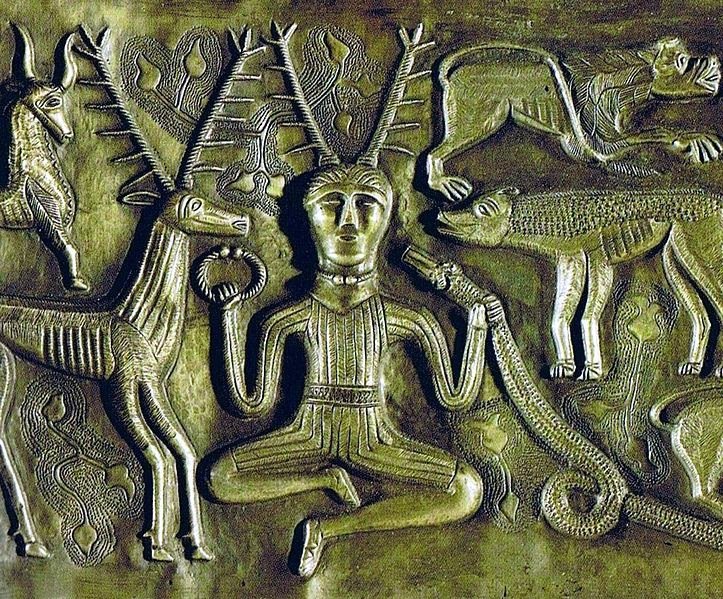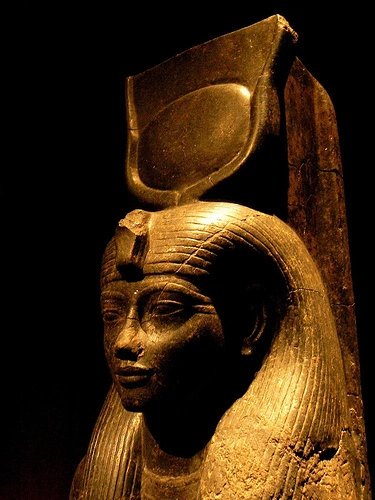Mystery Of The Horned Serpent In North America, Mesopotamia, Egypt And Europe
Ellen Lloyd AncientPages.com - The horned serpent is a very interesting creature, not only because we know relatively little about it but also because it appears in ancient stories in several parts of the world.
Known under different names, the horned serpent has been encountered in North America, Egypt, Mesopotamia, and Europe. Who or what was this creature, and why was it important to our ancestors? Is the horned serpent somehow related to the mysterious Serpent People?
Native American Legends And Rock Carvings Of The Horned Serpent
Among Native Americans, the horned serpent was regarded either as a dangerous water creature or as a spirit of rain and fertility who controlled earthquakes and floods. It was known to many different tribes in various parts of America, but the memory of the animals has been kept alive through oral traditions, especially in the Southeastern Woodlands and Great Lakes.
Rock art depicting a Horned Serpent, at Pony Hills and Cook's Peak, New Mexico. Image credit: Wikipedia
Legends of the horned serpent differ, but in most cases, the animal is described as a huge, scaly, dragon-like serpent with horns and long teeth. Were all these stories based on a real, now-extinct animal?
It is possible since Native Americans have always had a special relationship with Nature, but there are also scholars who suggest the horned serpent was simply a mythological spirit.
Rock carvings of the horned serpent have been found in New Mexico, Alabama, Mississippi, and other places.
Ancient Symbol Of Horns Was Universal
Horns represent the primal power of nature, express unstoppable power and majesty, and have been synonymous with this strength throughout human history.
Credit: Wikipedia
Horned animal deities played a significant role in the early civilizations of the ancient world, where the power and mysteries of the Sumerian bull gods of Sumeria and the Egyptian ram and bull gods were transmitted into the civilizations of the ancient world.
Several ancient gods, people, and animals were depicted with horns. Moses and Alexander the Great have been portrayed with horns.
Gods And Animals With Horns In Europe
In Europe, we encounter several mythological beings who were believed to have had horns.
Cernunnos was a god in Celtic mythology who possessed two deer antlers on the top of his head. The antlered god Cernunnos, whose cult is most widely attested, is usually represented with the horns of a ram or a deer squatting on the ground, and his posture indeed recalls that of the Buddha with a humanoid body in Celtic myth.
The "Cernunnos" type antlered figure on the Gundestrup Cauldron. Image credit: Wikipedia
There is no one particular myth concerning him, for only his image remains. The ‘cer’ part of his name, relating to his antlers, means ‘horned.’ He is found mainly in sculpted statues and reliefs from ancient Gaul (modern France), but the clearest image is found on the silver votive cauldron, the Gundestrup Cauldron, described in one of our articles.
There are also myths and legends about Herne the Hunter, a mysterious, mythical creature who was said to reside in Windsor Forest and Great Park in the English county of Berkshire.
William Shakespeare described him as “a spirit” and “sometime a keeper … in Windsor forest” who is seen to “walk round about an oak, with great ragg’d horns” at midnight during wintertime.
Horned Serpent In Mesopotamia And Egypt
Ningishzida, a Mesopotamian deity of vegetation and the underworld, as well as the most likely son of goddess Ereshkigal, is sometimes depicted as a serpent with horns.
Egyptian goddess Hathor is also commonly depicted as a cow goddess with head horns in which is set a sun disk with Uraeus.
These representations may not have any connections to the horned serpent Native Americans were familiar with, but it’s nevertheless interesting to note that various beings were associated with horns in many parts of the world.
Egyptian goddess Hathor. Credit: Wikipedia
We should also not forget that the mysterious Serpent People were known to all ancient civilizations. Present in various parts of the globe – as the “Nagas” (“snakes”) in India, Amaru of South America, the Quetzalcoatl (“Plumed Serpent”) in Mexico, the Djedhi (“snakes”) in Egypt, the Lung (“dragons”) in China or perhaps the Adders (“snakes”) in Britain – the Serpents of Wisdom were welcomed by the indigenous people and worshipped as “Serpent prophets”.
Updated on May 5, 2024
Written by Ellen Lloyd – AncientPages.com
Copyright © AncientPages.com All rights reserved. This material may not be published, broadcast, rewritten or redistributed in whole or part without the express written permission of AncientPages.com
More From Ancient Pages
-
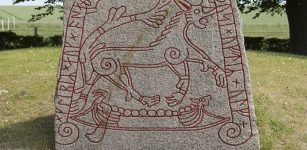 Naglfar Nail-Ship Carries Demonic Forces To Ragnarok In Norse Beliefs
Featured Stories | Aug 10, 2020
Naglfar Nail-Ship Carries Demonic Forces To Ragnarok In Norse Beliefs
Featured Stories | Aug 10, 2020 -
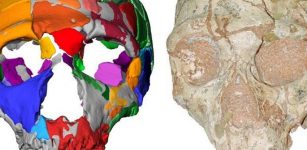 Mysterious 210,000-Year-Old Apidima Skull Could Re-Write Human History
Archaeology | Jul 11, 2019
Mysterious 210,000-Year-Old Apidima Skull Could Re-Write Human History
Archaeology | Jul 11, 2019 -
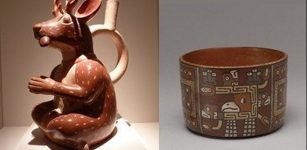 Genes And Languages: Development Of Pre-Incan Culture In Central Andes
News | Oct 26, 2020
Genes And Languages: Development Of Pre-Incan Culture In Central Andes
News | Oct 26, 2020 -
 Sightings Of Mysterious Walking Children And Ominous Beings In California’s Cursed Forest
Featured Stories | Oct 15, 2024
Sightings Of Mysterious Walking Children And Ominous Beings In California’s Cursed Forest
Featured Stories | Oct 15, 2024 -
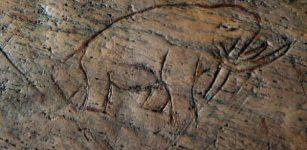 Controversial Study Of Ancient DNA Could Re-Write History Of South Florida And Prove Humans And Huge Prehistoric Animals Co-Existed
Archaeology | Sep 23, 2014
Controversial Study Of Ancient DNA Could Re-Write History Of South Florida And Prove Humans And Huge Prehistoric Animals Co-Existed
Archaeology | Sep 23, 2014 -
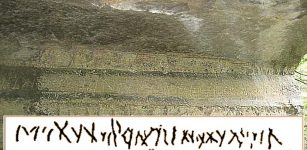 Mystery Of The Ancient Sitovo Inscription: Undeciphered Script Or Just A Natural Rock Formation?
Featured Stories | Apr 17, 2016
Mystery Of The Ancient Sitovo Inscription: Undeciphered Script Or Just A Natural Rock Formation?
Featured Stories | Apr 17, 2016 -
 Wasabi Plant Can Save Ancient Bio-Deteriorated Papyrus
Scripts, Paintings & Inscriptions | Apr 4, 2024
Wasabi Plant Can Save Ancient Bio-Deteriorated Papyrus
Scripts, Paintings & Inscriptions | Apr 4, 2024 -
 Re-Writing History Of England’s Domesday Book Of William I The Conqueror
Archaeology | Nov 27, 2018
Re-Writing History Of England’s Domesday Book Of William I The Conqueror
Archaeology | Nov 27, 2018 -
 Ancient DNA Study Reveals Surprise About Britain’s Bronze Age – What Happened On The Orkney Islands?
DNA | Mar 31, 2022
Ancient DNA Study Reveals Surprise About Britain’s Bronze Age – What Happened On The Orkney Islands?
DNA | Mar 31, 2022 -
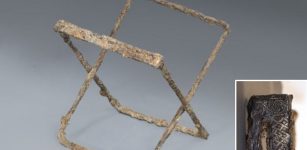 Extremely Rare Medieval Folding Chair Reveals Its Secrets
Archaeology | Oct 13, 2023
Extremely Rare Medieval Folding Chair Reveals Its Secrets
Archaeology | Oct 13, 2023 -
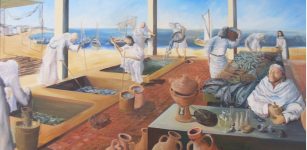 Mediterranean Hunter-Gatherers Relied On Marine Resources More Than Previously Thought
Archaeology | Feb 22, 2023
Mediterranean Hunter-Gatherers Relied On Marine Resources More Than Previously Thought
Archaeology | Feb 22, 2023 -
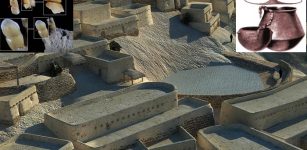 4,000 Years Ago Women Of El Argar Used Their Teeth As Tools
Archaeology | Nov 10, 2020
4,000 Years Ago Women Of El Argar Used Their Teeth As Tools
Archaeology | Nov 10, 2020 -
 Land of Israel: A 5,000-Year-Old Settlement And A Pottery Kiln Unearthed Near Beit Shemesh At The Site Of Hurvat Husham
Archaeology | Oct 30, 2024
Land of Israel: A 5,000-Year-Old Settlement And A Pottery Kiln Unearthed Near Beit Shemesh At The Site Of Hurvat Husham
Archaeology | Oct 30, 2024 -
 Unexplained Phenomenon Around Yellowstone Puzzles Scientists
Featured Stories | Nov 12, 2018
Unexplained Phenomenon Around Yellowstone Puzzles Scientists
Featured Stories | Nov 12, 2018 -
 Unusual Medieval Knife Used Like An Eraser Discovered In Poland
Archaeology | Feb 16, 2018
Unusual Medieval Knife Used Like An Eraser Discovered In Poland
Archaeology | Feb 16, 2018 -
 Ancient DNA Reveals The World’s Oldest Family Tree
Archaeology | Dec 27, 2021
Ancient DNA Reveals The World’s Oldest Family Tree
Archaeology | Dec 27, 2021 -
 On This Day In History: King James I Of Scotland Was Assassinated – On Feb 21, 1437
News | Feb 21, 2017
On This Day In History: King James I Of Scotland Was Assassinated – On Feb 21, 1437
News | Feb 21, 2017 -
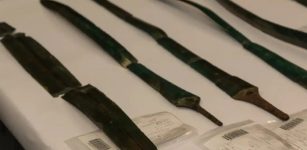 Seven Bronze Age Swords And Large Hoard Of Slavic Coins Found In Germany
Archaeology | Dec 4, 2023
Seven Bronze Age Swords And Large Hoard Of Slavic Coins Found In Germany
Archaeology | Dec 4, 2023 -
 Mystery Of 2000-Year-Old Basel Papyrus Likely Written By Physician Galen – Is Solved
Archaeology | Jul 14, 2018
Mystery Of 2000-Year-Old Basel Papyrus Likely Written By Physician Galen – Is Solved
Archaeology | Jul 14, 2018 -
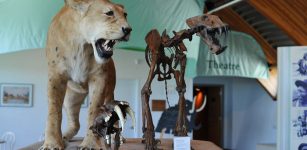 Remains Of Ancient Predators Shed Light On How Humans Did Or Didn’t Find Food
Archaeology | May 2, 2022
Remains Of Ancient Predators Shed Light On How Humans Did Or Didn’t Find Food
Archaeology | May 2, 2022

